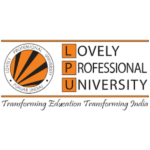The Supreme Court of India has stepped in to address concerns in Karnataka’s education system by issuing an order restraining the state from declaring the half-yearly exam results for students in Classes 8 to 10. This decision comes as a significant move to prevent undue stress on students and reconsider the educational practices that are currently in place. The ruling has sparked discussions about the way forward for the state’s education system and raised critical questions about the balance between academic rigor and student well-being.
The Supreme Court’s Order
The Supreme Court recently directed the Karnataka state government to withhold the announcement of the half-yearly exam results for students in Classes 8 to 10. The decision was made in response to concerns about the curriculum’s structure, the pace of evaluations, and the pressure being placed on young students. The court’s order serves as a pause, allowing time for a review of the assessment process to ensure it aligns with the best interests of students.
The main rationale behind the order was to alleviate the stress associated with frequent exams and rigorous evaluation criteria. The Supreme Court observed that young students often face overwhelming pressure due to high expectations set by the curriculum, which could negatively impact their mental health and overall development. By holding off on the release of the results, the court aims to prevent additional anxiety for students and parents.
The Implications for Karnataka’s Education System
Impact on Students
For students, this decision could come as a relief. Exams are already a significant source of stress, and the ongoing pressure of frequent assessments can exacerbate anxiety and burnout, especially among teenagers. With the results temporarily on hold, students can focus more on learning and less on the results of each exam, fostering a more conducive environment for personal and academic growth.
Moreover, the move may signal a shift in how academic success is measured, pushing the focus from merely scoring well in exams to a more holistic approach that values understanding and skills development over rote memorization. This change could encourage students to engage more deeply with the material rather than cramming for tests.
Consequences for Teachers and Schools
Teachers and schools will also feel the impact of the Supreme Court’s decision. For educators, it means reconsidering the teaching strategies used to prepare students for exams. There may be a need for greater emphasis on continuous and formative assessments rather than summative assessments like half-yearly exams. Schools will likely have to adapt to new guidelines regarding how student performance is evaluated and reported.
Why the SC Intervened: The Concerns Raised
The Supreme Court’s intervention came after concerns were raised regarding the education system’s current practices. Critics argue that the curriculum is heavily loaded, and the frequent examinations place undue pressure on students, leading to an unhealthy focus on grades rather than learning. This approach can stifle creativity and limit students’ ability to think critically.
Additionally, there is growing awareness of the mental health challenges faced by students who are subjected to relentless academic pressure. The court’s decision reflects a broader understanding that student well-being should be a priority in education, and that the system must evolve to accommodate this need.
Pressure on Students and Parents
Parents also bear the brunt of the current evaluation system, often finding themselves stressed over their children’s performance. The high-stakes nature of exams, even at relatively young ages, creates a culture of fear and anxiety, where academic performance is seen as the sole indicator of a child’s future success. By restraining the declaration of results, the court is not only reducing stress for students but also easing the burden on parents who feel pressured to ensure their children excel.
Future Steps for Karnataka’s Education System
To address the issues raised, Karnataka’s education system may need to undergo significant changes. Here are some recommended steps to move forward:
1. Revise the Curriculum: Streamlining the curriculum to reduce the burden on students and focus on key learning outcomes can help alleviate pressure. The content should be tailored to promote critical thinking, problem-solving, and creativity.
2. Reevaluate the Assessment Methods: Instead of relying on traditional exams, incorporating continuous assessments and project-based evaluations could provide a more accurate picture of a student’s abilities. This approach would emphasize understanding over memorization.
3. Promote Mental Health Awareness in Schools: Introducing mental health programs and providing resources for students to cope with academic stress can foster a healthier learning environment.
4. Include Student and Parent Feedback in Policy Making: Engaging students and parents in discussions about educational reforms ensures that the policies address their concerns and needs.
Conclusion
The Supreme Court’s decision to restrain Karnataka from declaring the half-yearly exam results for Classes 8 to 10 is a step in the right direction. It recognizes the need to rethink educational practices that may inadvertently place excessive stress on students. By prioritizing student well-being and a more balanced approach to learning, this move could pave the way for a reformed education system that nurtures both academic and personal growth. The focus should now be on implementing sustainable changes that address the core concerns raised while fostering an environment where students can thrive without the constant pressure of examinations.
FAQs
1. Why did the Supreme Court restrain Karnataka from declaring the results?
The Supreme Court restrained the state to alleviate student stress and review the current evaluation system to ensure it aligns with the students’ best interests.
2. What impact does this decision have on students?
It reduces exam-related stress, shifting the focus from grades to a more holistic approach to learning and development.
3. How might this ruling affect the education system in Karnataka?
It could lead to changes in curriculum and assessment methods, emphasizing continuous assessments over traditional exams.
4. What led to the Supreme Court’s intervention?
Concerns about the pressure on students due to the curriculum’s structure and frequent evaluations prompted the court’s intervention.
5. What can be done to address the concerns raised by the court?
Revising the curriculum, adopting continuous assessments, promoting mental health awareness, and including feedback from students and parents can help address these concerns effectively.







